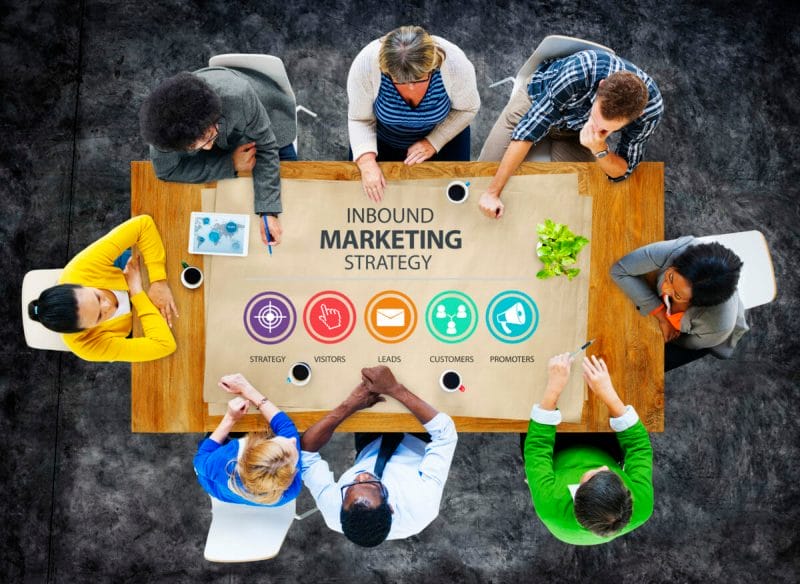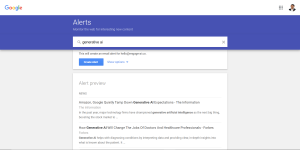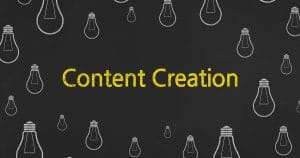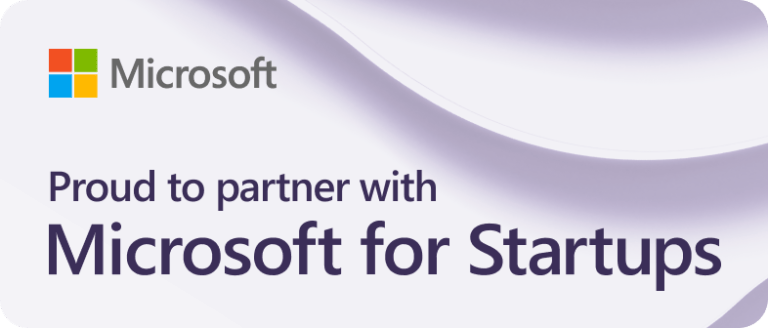Inbound marketing is a powerful way to growth hack your business. This article will explore what inbound marketing is and answer a popular question:
“Why is social media an important part of inbound marketing tactics?”
What is Inbound Marketing?
In brief terms, inbound marketing is all about bringing prospects to you rather than constantly chasing after them. It’s about creating content that inspires prospects and engages your audience.
This strategy has been around for quite some time, but the internet has made it much more effective than ever before. Therefore, it’s vital to incorporate inbound marketing tactics into your business, especially if you’re struggling to grow.
Winning Inbound Marketing Tactics
There are many different types of inbound marketing tactics to consider. It would help to know which ones will work for you and your business because there is no one-size-fits-all solution.
I highly recommend these three inbound marketing tactics to growth hack your business:
Inbound Marketing Tactic: Content Marketing
Content marketing is the process of creating and distributing valuable content to attract an audience. This type of inbound marketing has a long-term focus that helps build trust between you and your current customers and attract new prospects. The best thing about this strategy? It’s scalable, and you don’t have to spend a lot of money on it.
For content marketing to be effective, your content needs to be high-quality and valuable enough that prospects can’t wait to share it with their friends; this means developing exciting topics, providing helpful advice or tips that apply universally across industries, and making it easy for people to share your content.
If you’re interested in discovering how to create compelling, high-quality content for your business and still save cost and time, read these blog posts for inspiration:
- A 2021 Guide to Content Update: Benefits and Strategies
- 8 LinkedIn Content Types: Why, How & When to Use Them
Inbound Marketing Tactic: SEO
Search Engine Optimisation is the process of optimising your site for search engines; this includes content such as meta tags and keywords to rank higher on Google pages.
It’s essential to have an inbound marketing strategy that incorporates this type of tactic so you can increase traffic to your website and grow your business.
“But the field of SEO is far too saturated!”
If this is what you think, allow me to assure you this: it’s not if you’re looking in the right places.
Let me give you an example. If you were to write a blog post on inbound marketing and select “inbound marketing” as your SEO keyword, you’d be competing with countless high authority websites. The likelihood of your blog post appearing on the first page of a search engine like Google are slim to none.
So, where should you focus on leveraging your efforts?
If you’re a startup, you’ll want to focus on the “low-hanging fruits”, which are the keywords with less competition. Long-tailed keywords are a great example of what I’m talking about.
For instance, you can opt for “inbound marketing for small businesses“ instead of aiming to rank using the keyword “inbound marketing”.
Here are a few other things you need to factor in before deciding on a keyword:
1) Keyword Difficulty: How difficult will it be to rank for this keyword?
Are there many high authority websites competing for the same keyword, or is it less competitive?
Higher competition means you’ll need more work and time to rank higher.
Lower competition means you can take more manageable steps with fewer resources required.
2) Search Volume: How often is this keyword searched for?
The more frequent a keyword is searched for, the better chance you have of ranking.
However, if it doesn’t get much traffic, then your article won’t be seen by many people, and this means fewer opportunities to convert them into customers!
For more information about how you can make SEO work for you, you may read ”How Much Does Blogging Help SEO in 2021?”.
Inbound Marketing Tactic: Social Media
Social media is a form of inbound marketing that has become a must-have for businesses of all sizes. It’s an easy and efficient way to grow your audience and provide high-quality content. Not to mention, it’s a great way to learn about your audience and what they want.
However, there are a plethora of social media platforms, and you may find that some work better for your business than others. For instance, if your target audience is made up of college students, you might want to create content on Snapchat and Instagram actively.
Nevertheless, every business should invest some time and effort in creating a profile and content on LinkedIn. Why? LinkedIn provides a professional networking environment and better chances of getting your content in front of others. After all, out of approximately 700 million users, only 3 million users post content there weekly.
Even if your target audience comprises consumers, you don’t want to lose out on chances of potential partnerships and collaborations. Not to mention, consumers nowadays tend to research businesses and companies before making their purchase decisions. Their research activities also include social media accounts.
Why is Social Media an Important Part of Inbound Marketing?
Inbound marketing is a form of digital marketing that uses content to attract potential customers. For inbound marketing to be effective, it must include social media like LinkedIn, Facebook and Twitter.
Whether you incorporate SEO, content marketing, email drip campaigns or other tactics into your business marketing efforts, social media is the stage that allows you to spread awareness or get the word out. In other words, it works as an amplifier for your choice of inbound marketing tactics.
Social media is also an opportunity to learn more about your audience and engage with them regularly, leading to increased customer loyalty. With so numerous social media platforms available today, there are endless opportunities to utilize the medium for marketing purposes!
Additionally, social media plays an integrative role if you’re using several inbound strategies to market your business. To put things into perspective: If content marketing is the personality of your inbound campaign and SEO is the backbone, then social media is the glue that holds everything together.
How Do You Game the Social Media Algorithm?
The algorithm in social media determines the content displayed to your audience. Therefore, it’s essential to know how these algorithms work to get ahead of your competition.
Across the board of social media platforms, there are several consistencies that may make your content go viral:
– Quality and relevant content
– Engagement (likes, clicks, shares, comments, follows)
– Relevant and appropriate tags/hashtags
However, that’s only the gist of it. To get the algorithm to work in your favour, you’ll need to understand how each platform decides which content to promote or bury.
In this article, we will focus on how you can get more reach and visibility out of LinkedIn via gaming the networking and content platform’s algorithm.
How to Make the LinkedIn Algorithm Love Your Content
There’s something called the golden hour on LinkedIn. If a piece of content doesn’t get significant engagement within the first two hours, it’s unlikely to continue performing well over time.
What’s the Best Time to Post on LinkedIn?
With such a small window of opportunity, you’ll want to make sure you’re posting on a day and time that will most likely give you the most engagement.
Tuesdays, Wednesdays and Thursdays are the best days to post.
It would be best if you also tried to post between 8 a.m. to 2 p.m. for the best results.
Aside from fixing a posting schedule, you’ll want to get your connections to engage with your content. The more engagement you receive from your first-level connections, the more likely it is for LinkedIn to promote your content beyond your network on LinkedIn; this means more eyeballs on you and, by extension, more prospects too.
But here’s the thing: A lot of LinkedIn users tend to be readers, not engagers. Hence, it’s not like no one’s reading your content; it’s just that you have a silent audience. And because your first-level connections aren’t engaging, your content won’t be boosted by the LinkedIn algorithm. Subsequently, your content won’t be seen by prospects. In short, it’s a snowball effect that puts your content out of your target audience’s sight.
Here are some exclusive tips you can use to get the engagement you deserve on LinkedIn:
1) Choose Post over Article
LinkedIn users used to gain a lot of exposure and visibility from writing pulse articles. Nowadays, LinkedIn Posts are more favoured by the algorithm.
2) Partnership marketing
If you lack a network to boost your LinkedIn content, this is a safe and cost-effective content distribution strategy to get your voice heard. Partner up with an exclusive network comprising like-minded business owners and boost brand presence via organic engagement.
3) Hashtags and tags
When used appropriately, hashtags (#) and tags (@) can be powerful ways to get your content discovered on a broader scale. Be sure to consider their placements and frequencies so that you don’t appear to be spamming.
4) Avoid publishing posts with external links
It’s great to provide more resources for your readers, but consider it from LinkedIn’s perspective: You’re not keeping their audience on the platform; instead, you’re directing them outside.
However, as of mid-year 2020, some LinkedIn users noticed that the LinkedIn algorithm no longer penalises them for incorporating external links within their posts. Perhaps the LinkedIn team has had a change of mind and believes that helpful external links make a piece of content more organic and credible, thereby keeping viewers on their website.
Nevertheless, it’s hard to say whether this change will be permanent, and you won’t want to lose out on impressions because LinkedIn decides that external links are reducing the dwelling time of their users again.
As a precaution, you can provide links in the comments section. Alternatively, you can first publish a post without any links and then go back to edit it so that the links are included. As the algorithm doesn’t pick up on the change, you won’t be penalised for it.
5) Choose text over images
It’s always good to have a mixture of everything. Nevertheless, out of the types of content you can create on LinkedIn, long-form texts get the most engagement. LinkedIn often changes the character limits for each post, however. At present, you only have 3000 characters, which translates to approximately 462-600 words (including spacing), to work with.
6) Make your posts personal
This can be a bit tricky, so here are some guidelines for you. If you’re in the insurance provider industry, you don’t want to be posting content about insurance one week and then posting about pet care the next. It would help if you keep your brand and business at the top of your readers’ minds by providing insightful content on insurance, but your posts don’t always have to be technical.
For instance, you can talk about your own experiences concerning insurance. Perhaps you’ve had to deal with a problematic claim, or maybe you’ve had an insurance nightmare.
Be relatable and authentic; you’ll be surprised how much engagement you can get out of this type of content.
“Great minds discuss ideas.
Average minds discuss events.
Small minds discuss people.”
There are many ways to interpret this quote by Eleanor Roosevelt. You can perceive it as Roosevelt discussing the levels of intellect. Alternatively, you could also say that it’s the frequency by which the types of topics are discussed.
Why do you think so many of us are drawn to social media? It’s because we’re people-watchers. It’s not possible even for the most brilliant minds to solely talk about ideas.
Overall Benefits of Inbound Marketing
Now that you know some of the best inbound marketing tactics out there, here are the top overarching perks of employing these tactics for your business:
1) It’s cheaper than outbound marketing.
Why spend a fortune on traditional marketing tactics, like newspaper or TV ads? Why not just put that capital into creating quality content for social media and inbound channels instead?
2) It promotes thought leadership and self-expression for your brand or company.
A great thing about inbound marketing is that it gives your company a voice. When people engage with you and read what you have to say, they’re more likely to remember who you are for future transactions.
3) It’s more authentic.
Outbound marketing, like TV ads and magazines, can be seen as a form of pure self-promotion. Why would people believe an advertisement when they see it on the side of their car or in a magazine? In contrast, your social media posts are much more likely to sound organic because you’ve taken time and effort to write them.
Final Thoughts
Inbound marketing is a valuable way to garner more attention for your company and create a positive perception of it. It’s also an excellent way to keep up with the digital age since social media has become an essential facet of our culture.
Why not seize the opportunity now and get those prospects through the door?








